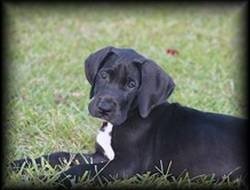
|

|
|
|
| ||
Great Dane Puppies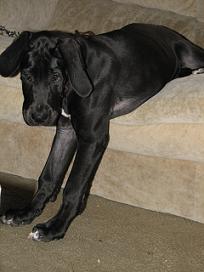 Great Dane Puppies make great pets. They are the perfect breed of dog for certain people. Make sure you are ready for the responsibilities that come with owning such a big dog before getting your self in a situation that you will regret. Unfortuantely, the humane shelters are littered with Danes because previous owners didn't know how big they were going to be. So, Remember, They will be Big, as a matter of fact they will be HUGE. If you are convinced that the Great Dane is the ideal dog for you, it is time to learn about where to find a puppy and what to look for. You should always do your research to find a good and reputable breeder. You are looking for an established breeder with out standing dog ethics and a strong commitment to the breed. If you are a new owner and have a lot of questions an established breeder is the one to ask. They should be able to answer all your questions and make you comfortable with your choice on the Great Dane. An established breeder can be relied on for advice. An established breeder will sell you a puppy at a fair price if, and only, if the breeder determines that you are a suitable, worthy owner of his dogs. A quality breeder will interview you because they want to make sure the puppy is going to a good home with a loving family. When choosing a breeder, reputation is much more important than convience of location. Real quality breeders are quiet and reassuring not bragging. You will hear about them at dog shows and trails, and by world of mouth. A Great Dane breeder will be more than willing to help a new owner find a good dog or puppy, but they are serious about their hobby and will generally expect some things from you. They may want evidence that you are serious about wanting to own a Great Dane and want to give it the best of all possible homes. Prior to actually selecting Great Dane puppies from any source, make certain that the Dane you may buy has these vital documents and necessary records:
Playing with your Great Dane PuppiesAlthough Great Dane puppies are larger than adult dogs of other breeds, they are actually quite fragile. Because of their size and weight, a fall for Great Dane puppies has the potential for greater damage than a fall for a smaller puppy of a different breed. Danes tend to break bones easily. Tug-of-war is a game that is not advised, it is believed that it teaches the puppies possessiveness and aggression. It could also cause injury in your puppy through a rough jerk. Until your puppy is at least 18 months of age do not do any kind of forced exercise. Allow her all the downtime she wants. A good deal of rest is important and necessary for a growing puppy. Many adult dogs also sleep or rest about twenty hours a day. A Great Dane does a lot of sleeping, so let her have her rest. Male or FemaleYour expectations for your pet will influence your decision about the gender of your Great Dane puppies. Male Great Danes are larger than females. Males will be more territorial than females, and perhaps more likely to attempt escape from the backyard in order to cruise the neighborhood. Female Great Danes should be decidedly feminine in their graceful and elegant appearance. Females are usually quieter and gentler than the males, easier to house train, more affectionate, and less inclined to roam. If you do select a female puppy and have no intention of breeding or showing her, by all means have her spayed, for your sake and hers. One benefit of having your female spayed is, it almost entirely eliminates the possibility of breast cancer ever occurring. It is recommended that all females eventually be spayed so that they may enjoy a happier, healthier, old age. A properly trained, well bred Great Dane of either sex should be an excellent pet for the right family. What to Look for when Choosing Your Great Dane PuppiesThe pup should be curious and eager to meet you. Always check the bite of your selected puppy to be sure that it is neither overshot nor undershot; minor faults may correct themselves as the dog grows, but major ones may worsen over time. Take time to observe the Great Dane puppies, watch how they interact with each other and with their mother. Look for puppies that seem to be alert, sturdy with bright eyes, unafraid, and well adjusted. Avoid puppies that are hyperactive, dull, or listless. The coat should be clean and thick, with no signs of parasites. The premises on which the puppies are being raised should (look and smell) clean and be tidy, making it obvious that the great dane puppies have been taken care of. A conscientious breeder takes real interest and concern in the welfare of the dogs he or she causes to be brought into the world. Puppies should be between their seventh and tenth week before being brought home. Breeders who permit their Great Dane puppies to leave early are more interested in making a profit than in their puppies well being. Never buy any animal from a pet store. Socializing Your New Puppy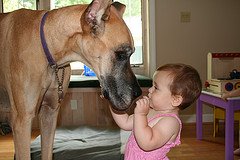 We ask our dogs to live with us under our terms and conditions. Therefore, it is important to socialize them so they can more easily adapt to their human family, neighbor, and other animals. Socialization deals with stimulating the five senses. It is the exposure to sights, sounds, smells, tastes, and touch. Socialization is interaction with life and all it has to offer, and being able to adapt to its challenges. If a dog is deprived of social stimulation, both physical and emotional health are compromised. It has proven that the brain of an animal that is not exposed to a full range of life’s sensory input is actually smaller than the brain of other animals. Because of the lack of physical, emotional, and mental stimulation (socialization), many domesticated animals do not get along well with others. A lack of socialization also fosters other problems, including health problems, obsessive tail chasing, self-mutilation, scratching, biting, destruction of the environment (including walls, floors, and furniture), interminable spells of barking, chewing, and various manifestations of aggression. Although there can be other causes for these problems, poor socialization or a total lack of socialization is an important factor in most cases. The first sixteen weeks of a dogs life are the most influential in shaping the adult dog’s temperament and behavior. Conscientious breeders begin handling pups as soon as they are born to get them used to human touch and start the socialization process. All through puppy hood, the mother dog socializes her pups through her tactile stimulation, using her tongue to massage her puppies to teach them how to control their elimination. She talks to them in a language made up of sounds, touches, smells, and body postures. And as the pups grow older, the bond of social familiarity is strengthened through this network of communication. When it becomes your turn to begin the socialization process, take your dog to new and exciting places. Introduce her to different people and different animals and you are on your way to having a social dog. Socialized pups are typically happier, friendlier, more predictable and able to handle stress better. Under-socialized pups often grow to become fearful, shy, anxious, and sometimes even fearfully-aggressive adult dogs because they lack the skills to cope with new situations. Socialization should not end with puppyhood but is more of a lifetime journey. Though the foundation for your dog's behavior is laid during the first few months, responsible pet owners reinforce social skills and continually expose their dog to new social experiences throughout the dog's entire life. Ideas for Socializing Your Dog:There are tons of ways to socialize your dog. You just need to be sure to make time to socialize your pup or adult dog by actively seeking new experiences that will be positive encounters. Here are a few ideas to get you rolling:
These are just a few ideas for socializing your dog. Always keep your dog under control, carry lots of treats, and keep it positive. Don’t force your dog into anything! Instead, keep it light-hearted, and if your dog appears overly anxious or overwhelmed, keep it short. Lifelong socialization is the best way for your dog to learn how to respond with less fear and stress to situations he will encounter throughout his life. It will lead him to be an overall happier, more balanced pet. Resources: Association of Pet Dog Trainers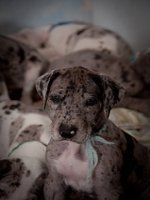 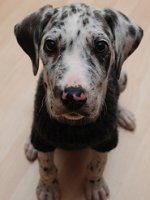 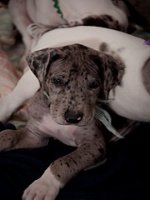 ImmunizationsVaccinations are an important part of a puppy's life. The maternal antibodies begin to fade and lose their effectiveness as the puppy ages. Distemper: This is virtually an incurable disease. If the dog recovers, he is subject to severe nervous disorders. The virus attacks every tissue in the body and resembles a bad cold with a fever. It can cause a runny nose and eyes and cause gastrointestinal disorders, including a poor appetite, vomiting and diarrhea. The virus is carried by raccoons, foxes, wolves, mink and other dogs. Unvaccinated youngsters and senior citizens are very susceptible. This is still a common disease. Hepatitis: This is a virus that is most serious in very young dogs. It is spread by contact with an infected animal or its stool or urine. The virus affects the liver and kidneys and is characterized by high fever, depression and lack of appetite. Recoverd animals may be afflicted with chronic illness. Leptospirosis: This is a bacterial disease transmitted by contact with the urine of an infected dog, rat, or other wildlife. It produces severe symptoms of fever, depression, jaudice and internal bleeding and was fatal before the vaccine was developed. Recoved dogs can be carriers, and the disease can be transmitted from dogs to humans. Your Great Dane will need an annual check up to maintain good health and minimize any future problems. Parvovirus: This was first noted in the late 1970s and is sitll a fatal disease. However, with proper vaccinations, early diagnosis and prompt treatment, it is a manageable disease. It attracks the bone marrow and intestinal tract. Symptoms include depression, loss of appetite, vomiting, diarrhea and collapse. Immediate medical atttention is of the essence. Rabies: This is shed in the saliva and is carried by raccoons, skunks, foxes, other dogs and cats. It attacks nerve tissue, resulting in paralysis and death. Rabies can be transmitted to people and is virtually always fatal. This disease is reappearing in the suburbs. Bordetella (Kennel Cough) The symptoms are coughing, sneezing, hacking and retching accompanied by nasal discharge usually lasting from a few days to several weeks. There are several disease-producing organisms responsible for this disesase. The present vaccines are helpful but do not protect for all the strains. It usually is not life threatening but in some instances it can progress to a serious bronchopneumonia. The disease is highly contagious. The vaccination should be given routinely for dogs that come in contact with other dogs, such as through boarding, training class or visits to the groomer. Coronavirus: This is usually self limiting and not life threatening. It was first noted in the late '70s about a year before parvovirus. The virus produces a yellow/brown stool and there may be depression, vomiting and diarrhea. Lyme Disease: This was first diagnosed in the U.S. in 1976 in LYme, CT in people who lived in close proximity to the dee tick. Symptoms may include acute lameness, fever, swelling of joints and loss of appetite. Your veterinarian can advise you if you live in an endemic area. After your puppy has completed his puppy vaccinations, you will continue to booster the DHLPP once a year. It is customary to booster the rabies one year after the first vacine and then, depending on where you live, it should be boostered ever year or every three years. This depends on your local laws. The Lyme and corona vaccines are boostered annually and it is recommended that the bordetella be boostered every six to eight months. A puppy mill is a large-scale commercial dog breeding operation where profit is given priority over the well-being of the dogs. Unlike responsible breeders, who place the utmost importance on producing the healthiest puppies possible, breeding at puppy mills is performed without consideration of genetic quality. This results in generations of dogs with unchecked hereditary defects. Within the walls of a puppy mill is a horrific life for animals. The breeding stock dogs have it the worst! They are the ones who live their entire lives in cages and are continually bred for years, without human companionship or even rest in between pregnancies. These animals have very little chance of ever becoming part of a loving family. These dogs receive little or no veterinary care and never see a bed, a treat or a toy. After their fertility wanes, breeding animals are commonly killed, abandoned or sold to another mill. The annual result of all this breeding is hundreds of thousands of puppies, many with behavior and/or health problems. Puppy mills are a profitable BUSINESS and little care or attention is given to the dogs. Puppy Mills sell directly to pet stores, as well as put up false and misleading information on their websites, or place fraudulent ads on Craigslist or other pet forums. To read more about this subject Great Dane World has 2 pages Dedicated to this. Animal Rescue Site and Stop Puppy Mills Mama Knows Pets Needs to be Adopted! The Humane Society made a downloadable book on How to Find a Good Dog Breeder Click here to read the PDF in your browser, or right-click to download it. Dog Adoption and Training Guide Learn about dog adoption, choosing dogs and puppies, choosing kennels or breeders. Visit 165 dog breed profiles with illness info. Caring for a dog includes health, illnesses, feeding, first aid, clicker and obedience training, grooming and much more. Numerous breed groups and a dog book and DVD section. Hybrid dog pages. Lots of photos! More 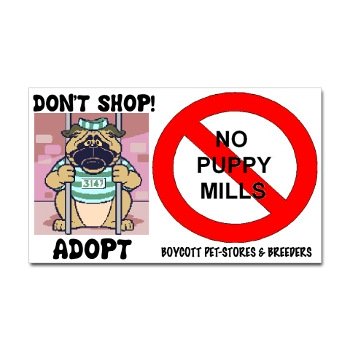 Table of Contents | Click Here To Visit Kittys Corner  Click Here to Vote for My Site! Click Here to Vote for My Site!
  Living with a pet can be beneficial to children. Pets can enhance a child's self-esteem, teach them responsibility and help them to learn empathy. However, children and dogs are not always going to automatically start off with a wonderful relationship. Parents must be willing to teach the dog and the child acceptable limits of behavior in order to make their interactions pleasant and safe. 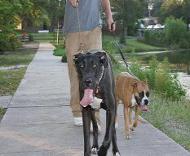 PedigreesA pedigree is a dog's family tree showing parents, grandparents, great grandparents, and more depending on how far it goes back. Pedigrees can be interesting to look at, but are the really useful? Absolutely, says Lisa Peterson. spokesperson for the AKC. "As a puppy buyer, it is important to ask for the pedigrees of both the parents of the puppies to see the lineage of your dog. Pedigrees contain valuable information." Depending on whether the pedigree comes from the breeder or from the registering organization, it should contain the names, date of birth or registration, breed, color if relevant, and titles of relatives from three to five or more generations back. Pedigrees also contain valuable health information. "AKC-certified pedigrees, for example, include health clearance information, with Orthopedic Foundation for Animals and Canine Eye egistration Foundation numbers indicating the dog has had those health tests. If the breeder also gives you health screening certificates for specific dogs, they should match the numbers on the pedigree," Peterson says. When first bringing your Great Dane puppy home Cesar Millan says, “I always recommend that people refrain from giving a dog too much affection for the first days or weeks after they bring the dog home.” You may be wondering why would he say this? They are so cute and helpless. But his logic behind this is “What’s best for the dog.” When a dog is in a new environment and a new pack, the first thing he’s concerned about are “Who’s running this place?” and “Is it safe”? By providing leadership and boundaries before affection, you are answering those questions for him, you are in charge, and you are going to keep him (and the rest of the pack) safe. It’s only after knowing the answer to these questions that a dog can truly relax, bond and become a full-fledged, trusting, respectful family member. 
~Kittys Corner~I have a Female Great Dane and her name is Kitty. She will be 2 in July '10. Her mother is a Blue Dane and her dad is a Black Dane. This is a picture of her here and there are lots of pictures of her on this website. This space is called Kittys Corner because when ever I am at my computer working (which is most of the time) Kitty is laying or sitting beside me with her head on my lap. So I made her a corner so she can voice what is going on in her world. ~Enjoy~The weather is so warm and sunny. I was getting tired of the cold and being stuck in the house. Now mom has been back taking me on our walks I missed our walks. Have you been doing anything fun lately? Will you send me your pictures so I can see them? Mom even said something about starting a contest. How fun! So start taking some pictures, or if you already have some, send them in so I can see them. Send in a Picture | |
| | ||
Great Dane Puppies Beginning Welcome to the World of the Great Dane.This website strives to bring you the latest information on Great Danes. The content is updated often so make sure and bookmark this site so you can keep up to date on the information. Link To UsReturn to top The Content of this Website is intended as General Information and is NOT Professional Advice. | ||
| | ||



